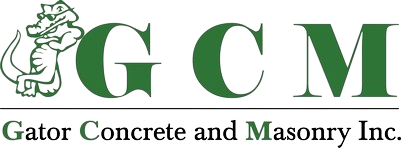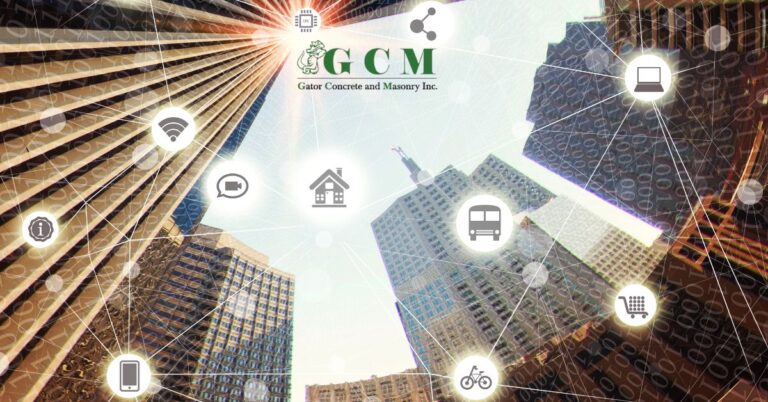The Internet of Things or IoT-enabled building management systems are undoubtedly changing the way modern buildings are run.
In today’s world of digital advancements, many people are undoubtedly looking for ways to incorporate intelligent systems into their buildings, whether they are homes, office buildings, commercial spaces, or industrial projects. When IoT technology is added to Building Management Systems (BMS), it changes how the end users plan, build, and run modern buildings. Adding IoT to BMS makes them more efficient and environmentally friendly and makes people safer and more comfortable.
In this article, let us discuss the different parts of IoT-enabled BMS, including their benefits, uses, and future.
What is a Building Management System?
In a nutshell, a building management system (BMS), sometimes called a building automation system (BAS), is a computerized system that controls and keeps an eye on a building’s mechanical, electrical, and industrial systems. Heating, ventilation, air conditioning (HVAC), lights, power systems, fire systems, and security systems are some of the most common of these services that allow the user to control and monitor seamlessly.
What You Need to Know About IoT in the Construction Industry
In recent years, the construction industry has been using IoT to boost safety on the job site, increase productivity, and make operations more efficient.
Common IoT gadgets include:
- Mobile devices with cameras
- Drones
- Robotics
- IoT gear
- Building Management Systems
IoT makes it easier for construction managers to monitor job sites in various ways. The fact that the construction industry is investigating IoT’s possible benefits shows that this technology will significantly impact building project management. However, some tools and methods may be easier to use than others.
Using IoT in buildings can help manage resources and budgets, ensure worker safety, and eliminate waste. IoT solutions let building managers or end users access data in real time, make decisions based on that data, and ensure repairs are done quickly. This increases the productivity, effectiveness, and efficiency of the building itself. As IoT keeps getting better, it will play an even more significant part in changing the building industry.
What IoT Does for BMS
Since the Internet of Things (IoT) came along, standard BMS has become much more helpful. IoT is a network of real things equipped with various sensors, program software, and other technologies that allow the systems to connect to the Internet, store data in the cloud, and share data with other devices and systems.
When connected to building management systems (BMS), IoT lets building systems be monitored, analyzed, and automated in real time. This makes building management more innovative, efficient, and fast.
The Important Parts of an IoT-Enabled BMS
Now that we have defined IoT and how it can help improve BMS efficiency let’s examine the critical parts of an IoT-enabled BMS.
Sensors and Actuators
These devices gather information about temperature, humidity, light levels, usage, and energy use. Sensors, on the other hand, tell actuators how to run building systems and if any controls need to be adjusted.
Connectivity
IoT devices in a BMS can talk to each other over Ethernet, Wi-Fi, Bluetooth, and other wired or wireless networks. It also allows you to store essential documents in the cloud, making it accessible to anyone who needs it. It enables team members to be connected, keeping everyone on the same page.
Data Processing and Analytics
Cloud computing and edge computing technologies process and analyze collected data to generate implementable ideas.
User Interface
Building managers can communicate with the BMS using dashboards, mobile apps, and web portals, which allows them to monitor and control things in real time.
The Pros of Using the Internet of Things (IoT)
As mentioned in the earlier sections, IoT is quickly changing how we connect with the world around us. IoT lets everyday things collect and share data by connecting them to the Internet. This technology is not only changing the way we live and work, but it’s also giving us many benefits that make our lives easier, safer, and more productive. In this section, let us discuss the advantages and disadvantages of using IoT in your next construction project.
Energy Efficiency
IoT-enabled BMS can set the right temperature, lights, and other building systems based on real-time data to reduce energy use. This way, you can efficiently put your systems and save energy costs in the long run. For example, sensors can tell when someone is in a room and change the temperature or turn off lights to save energy.
More Comfort and Productivity
IoT-enabled building management systems make people more comfortable and productive by keeping the conditions inside at their best possible state. Temperature, lighting, and air quality settings can be changed to suit each person’s tastes.
Predictive Maintenance
Internet of Things (IoT) sensors can check the health and performance of building equipment to figure out when it needs to be serviced. It can notify the end user if specific parts are due for repair or replacement. This proactive method cuts down on downtime, makes equipment last longer, and lowers the cost of maintenance.
Better Security
Security systems that use the Internet of Things (IoT) can monitor and send alerts in real time for fire hazards, unauthorized access, and other security threats. Integration with other building systems ensures that security is taken care of in every way.
Operational Efficiency
Automating routine tasks like setting up HVAC systems and lighting schedules makes the job of building managers easier and ensures that everything runs smoothly every time.
Data-Driven Decision Making
IoT devices allow you to collect a lot of data that can help building managers make intelligent choices about how to use energy and room and maintain the building.
Challenges in Using Internet of Things (IoT)
There are many benefits to using IoT to connect building management systems, but there are also some problems and things to think about.
Data Security and Privacy
Because IoT devices are used so much, people may worry about data security and privacy. However, strong cybersecurity measures can be implemented to keep sensitive data safe.
Interoperability
Connecting IoT devices made by different companies can be complex because they only sometimes work well together. It is critical to plan well to ensure seamless operability, and methods and interfaces need to be standardized to ensure integration.
Initial Costs
Setting up an IoT-enabled building management system can be expensive at first, making it an intimidating investment. However, the savings in energy and maintenance costs over time often make the original investment worthwhile.
Difficulty
Keeping an IoT-enabled BMS running and running well requires special skills and knowledge. It is critical to work with facility managers and workers with the right technical skills or receive the proper training to operate the systems.
Scalability
It is essential to ensure that the BMS can grow and change with the building as it does and as technology does.
How IoT-Enabled BMS Can Be
As discussed in the earlier sections, IoT-enabled systems collect and share data by adding sensors and connections to everyday items. This helps people make better decisions and automates tasks. These systems do not just work in one area, but they can improve various areas of a building. In this section, let us explore the multiple uses of IoT-enabled systems and show how this technology is being used to make places more innovative, more efficient, and quicker to respond.
HVAC Systems
IoT devices constantly check the temperature, humidity, and air quality inside and outside. This data lets the BMS change the HVAC settings right now, ensuring everyone is comfortable and energy use is low.
Lighting Control
Intelligent lighting systems use occupancy monitors and daylight harvesting to adjust the artificial lighting based on the number of people in the room and the amount of natural light available.
Security Systems
Intelligent cameras, motion detectors, and access control systems that are supported by the Internet of Things (IoT) can help protect your home or business by sending real-time alerts and automatically repairing security breaches.
Energy Management
Smart meters and energy tracking systems monitor energy use in real-time, identify inefficiencies, and implement energy-saving measures.
Space Utilization
Internet of Things (IoT) monitors track which rooms are occupied and how they are used, which helps with better space planning and management.
Water Management
Internet of Things (IoT) devices track how much water is used, find leaks, and improve watering systems, all of which help save water.
What Are The Trends For The Future
As technology improves, the building industry will likely use and incorporate IoT technology even more. New trends in IoT for buildings include connecting them to smart infrastructure and cities and using AI and machine learning to make them work better together.
These improvements in IoT technology could completely change the construction business by automating tedious chores and making construction companies more tech-savvy. As long as people keep investing in and developing new ideas for IoT in buildings, the future holds many opportunities to make the industry safer, more efficient, and cheaper.
There are a few trends that will shape the future of IoT-enabled BMS that make it look promising:
AI and Machine Learning
Adding artificial intelligence (AI) and machine learning techniques to IoT-enabled BMS will let it analyze data more accurately, plan maintenance ahead of time, and make decisions on its own.
Edge Computing
Processing data closer to where it is created, at the edge, will cut down on delay and make BMS more responsive. This method also makes data safer and lowers the amount of energy needed.
5G Connectivity
As 5G networks are rolled out, they will make it faster and more effective for IoT devices to connect, improving the performance and features of BMS that can connect to IoT devices.
Sustainability
As the focus on sustainability grows, IoT-enabled BMS will be crucial to getting green building approvals and following the rules.
Integration with Smart Grids
BMS, supported by the Internet of Things (IoT), will increasingly connect to smart grids to help stabilize the grid, use energy more efficiently, and participate in demand response programs.
Key Takeaway
IoT is becoming an essential part of new ideas in the construction business as it changes. Wearable tech can make workers safer, and smart sensors can make site operations run more smoothly. The Internet of Things (IoT) offers a lot of promise in construction, and leaders in the field are becoming more aware of it.
Incorporating IoT into buildings is completely changing the field and making it much more efficient, safer, and cost-effective. This technology makes project management more accurate, so construction managers can keep an eye on work and make the best use of their resources. Even though getting people to use IoT can be hard, its benefits are clear.

